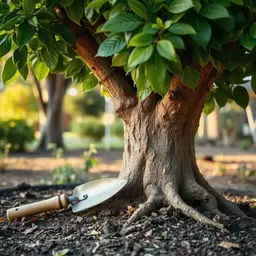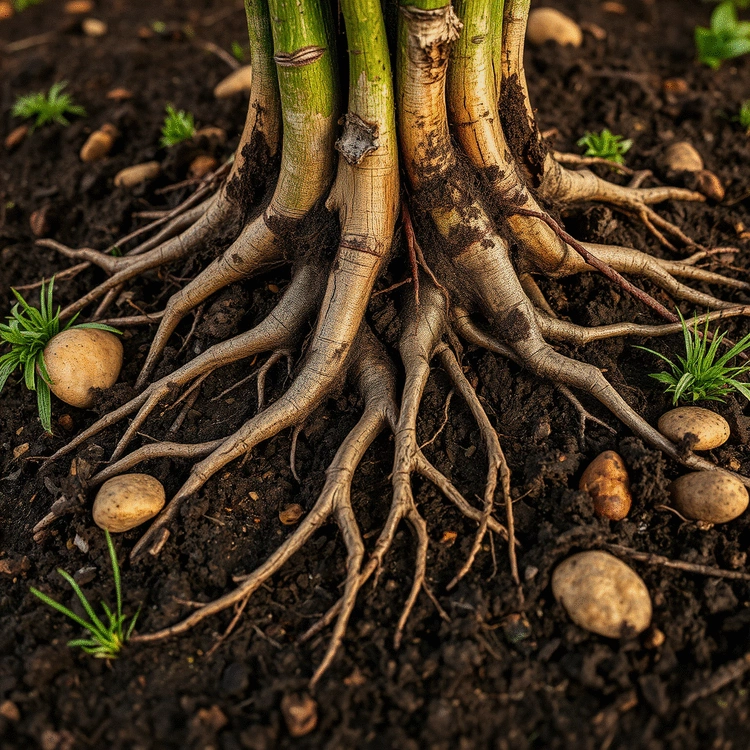
- Root Care
- Oct 30
2025-08-24
In the world of gardening, understanding the intricate relationship between soil health and tree vitality is essential. Did you know that proper soil aeration can significantly enhance the growth and resilience of your trees? By mastering this crucial practice, you can help your beloved trees thrive in a healthier environment.
Aeration significantly improves tree health by enhancing oxygen flow, nutrient uptake, and preventing root rot. Below are the main benefits and techniques:
Aeration creates air pockets, allowing oxygen to reach tree roots for respiration.
Well-aerated soil enables better absorption of nutrients, leading to healthier trees.
Regular aeration reduces the risk of root rot due to improved drainage and air circulation.
Aeration fosters a diverse soil ecosystem, supporting earthworms and microorganisms
Soil aeration may sound technical, but it's a simple yet crucial practice for maintaining healthy tree roots. Think of it as giving your soil a breath of fresh air! Aeration helps improve oxygen flow, enhances nutrient uptake, and prevents issues like root rot that can jeopardize the health of your trees.
When soil is well-aerated, tree roots can access vital nutrients and moisture more efficiently. This means your trees are better equipped to thrive, even in less-than-ideal conditions. With a better understanding of how aeration works, we can take proactive steps to foster a healthier environment for our beloved trees. For overall guidance on keeping your trees healthy, explore essential tree care and landscaping practices.
Aeration works wonders by creating small air pockets within the soil. These pockets allow oxygen to flow freely, which is essential for root respiration. When roots can breathe, they can absorb nutrients effectively, leading to stronger and more resilient trees.
To visualize this, think of soil as a sponge that needs to be squeezed to release the water inside. When we aerate, we’re essentially squeezing out compacted areas and opening pathways for air and nutrients. This process not only promotes root growth but also encourages beneficial organisms to thrive, enriching the soil ecosystem.
Healthy roots are the foundation of strong trees. Poor soil aeration can lead to root rot, a condition that occurs when roots are waterlogged and deprived of oxygen. This fungal disease can cause trees to decline rapidly, often leading to their demise.
By ensuring proper aeration, we minimize the risk of root rot. When roots are healthy, they can absorb water and nutrients, making trees less susceptible to stressors like drought or disease. A proactive approach to soil aeration can be the difference between a thriving tree and one struggling to survive! To learn more about identifying and preventing this issue, read our guide on identifying and preventing root rot.
Soil compaction is a common issue that can significantly impact tree health. It's essential to recognize the signs of compaction to address the problem before it escalates. Some of the most noticeable indicators include stunted growth, yellowing leaves, and difficulty in water drainage.
Observing the soil around your trees can provide clues about compaction. If you notice that water pools on the surface instead of soaking in or if your trees are struggling to establish new growth, it’s time to investigate further!
Soil compaction occurs when soil particles are pressed together, reducing the space between them. This can happen due to heavy machinery, foot traffic, or even natural forces like rain. When soil is compacted, vital air pockets are eliminated, making it hard for roots to grow and for microorganisms to thrive.
As a horticulturist, I see the effects of compacted soil firsthand. Trees in compacted soil often struggle to establish deep root systems, which ultimately affects their stability and overall health. Recognizing and addressing soil compaction is essential for nurturing a thriving tree canopy! For additional information on this topic, consider reading about soil compaction's effect on roots.
Here's a brief recap of the key points discussed so far:
To further clarify the topic of soil aeration and its benefits for tree health, here are some frequently asked questions:
As we wrap up our exploration of soil aeration, it's essential to reflect on the many benefits and techniques we’ve discussed. Aeration not only improves oxygen flow and nutrient uptake but also helps prevent issues like root rot. By implementing effective aeration methods, you're providing your trees with the support they need to thrive. Remember, healthy roots lead to vibrant trees!
Here’s a quick recap of the most effective aeration techniques you can use:
For those who love nurturing their trees, I encourage you to embrace these aeration techniques based on the specific needs of your tree species. Every tree is unique, and understanding its requirements can significantly enhance its growth and resilience. Whether you’re dealing with deciduous or evergreen trees, timing your aeration appropriately can make all the difference! To find the right trees for your specific growing conditions, consider exploring selecting trees for your garden.
Here are some final recommendations:
At Deep Roots Journal, we believe that gardening is as much about community as it is about individual practice. I invite you to engage with fellow tree care enthusiasts, share your experiences, and ask questions. Learning from one another can deepen your understanding and enhance your tree care strategies!
Connecting with local experts can be invaluable for personalized advice. You might discover unique challenges specific to your region or receive tips that can transform your gardening techniques. Don’t hesitate to reach out to horticulturists or join local gardening forums!
Lastly, let’s not forget the vital role of earthworms and beneficial microorganisms in maintaining soil health. These tiny heroes improve soil structure, enhance nutrient availability, and help aerate soil naturally! Encouraging their presence through organic gardening practices is a fantastic way to support your tree roots. For more ways to support root development, read about encouraging healthy root development.
By embracing these principles and staying connected with the gardening community, you’ll not only enrich your knowledge but also contribute to a healthier environment for our beloved trees. Happy gardening!
Here is a quick recap of the important points discussed in the article:
